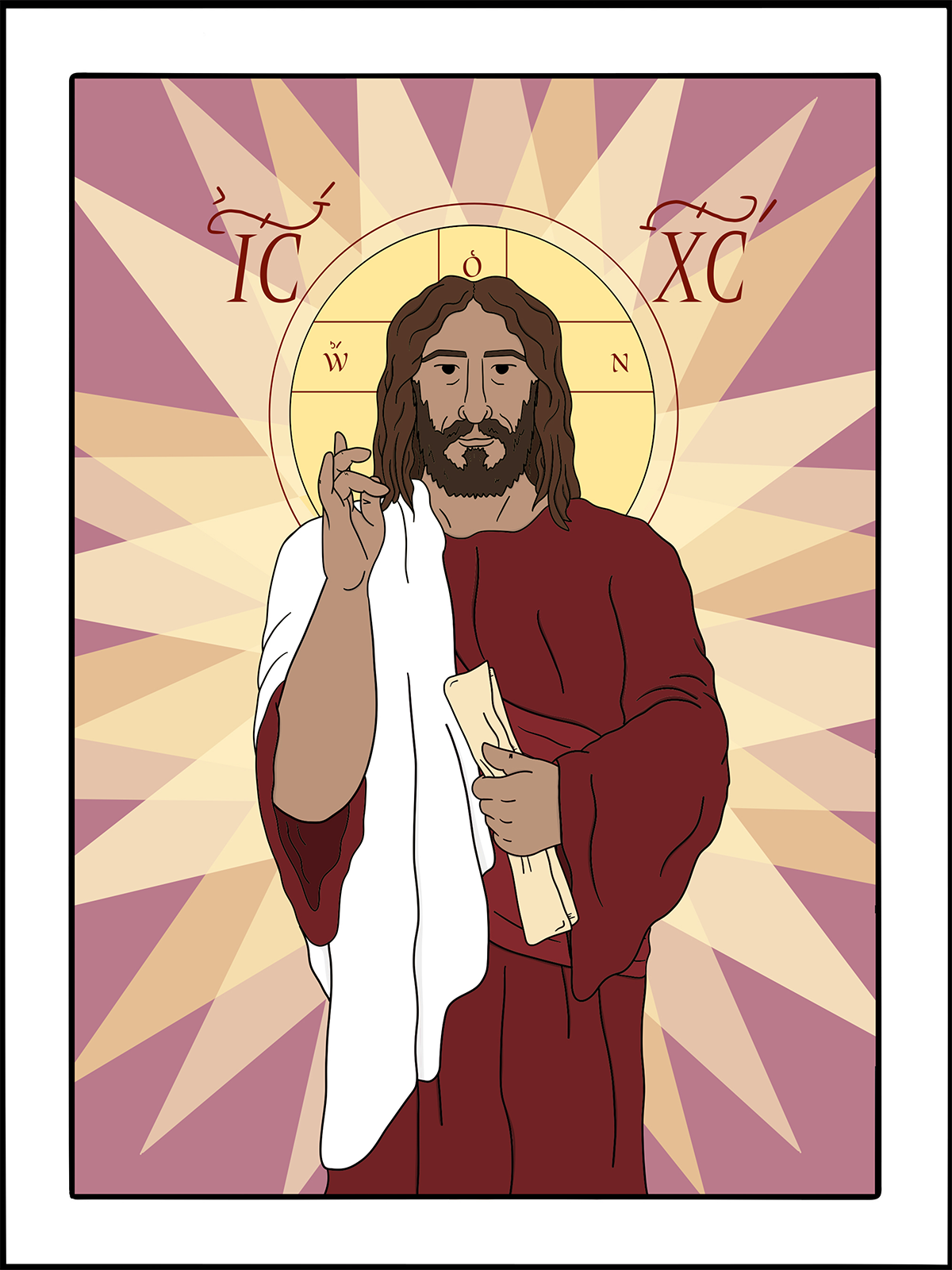
August 6
The Transfiguration of Our Lord Jesus Christ
art by Rev. Kirsten Kohr of Uhrichsville, Ohio O God, who on the holy mount revealed to chosen witnesses your well-beloved Son, wonderfully transfigured, in raiment white and glistening: Mercifully grant that we, being delivered from the disquietude of this world, may by faith behold the King in his beauty; who with you, O Father, and you, O Holy Spirit, lives and reigns, one God, for ever and ever. Amen.
The Transfiguration is not to be understood only as a spiritual experience of Jesus while at prayer, which three chosen disciples, Peter, James, and John, were permitted to witness. It is one of a series of spiritual manifestations by which God authenticated Jesus as his Son. It is at one with the appearance of the angels at the birth and at his resurrection, and with the descent of the Spirit at Jesus’ baptism. Matthew records the voice from heaven saying, “This is my Son, the Beloved, with whom I am well pleased; listen to him” (Matthew 17:5). Briefly the veil is drawn aside, and a chosen few are permitted to see Jesus, not only as the human son of Mary, but also as the eternal Son of God. Moses and Elijah witness to Jesus as the fulfillment of the Law and the Prophets. In Luke’s account of the event, they speak of the “exodus” which Jesus is to accomplish at Jerusalem. A cloud, a sign of divine presence, envelops the disciples, and a heavenly voice proclaims Jesus to be the Son of God.
Immediately thereafter, Jesus announces to Peter, James, and John the imminence of his death. As Paul was later to say of Jesus, “Though he was in the form of God, he did not count equality with God a thing to be grasped, but emptied himself, taking the form of a servant, and was born in human likeness. And, being found in human form, he humbled himself, and became obedient unto death, even death on a cross” (Philippians 2:6-8).
The Feast of the Transfiguration is held in the highest esteem by the Eastern Churches. The figure of the transfigured Christ is regarded as a foreshadowing of the Risen and Ascended Lord. The festival, however, was only accepted into the Roman calendar on the eve of the Reformation, and for that reason was not originally included in the reformed calendar of the Church of England. Since its inclusion in the American liturgical revision of 1892, it has been taken into most modern Anglican calendars.
Excerpted directly from “Lesser Feasts and Fasts 2022,” p. 344-345.
Lessons and PsalmExodus 34:29-35
Psalm 99 or 99:5-9
2 Peter 1:13-21
Luke 9:28-36
Preface of the Epiphany

